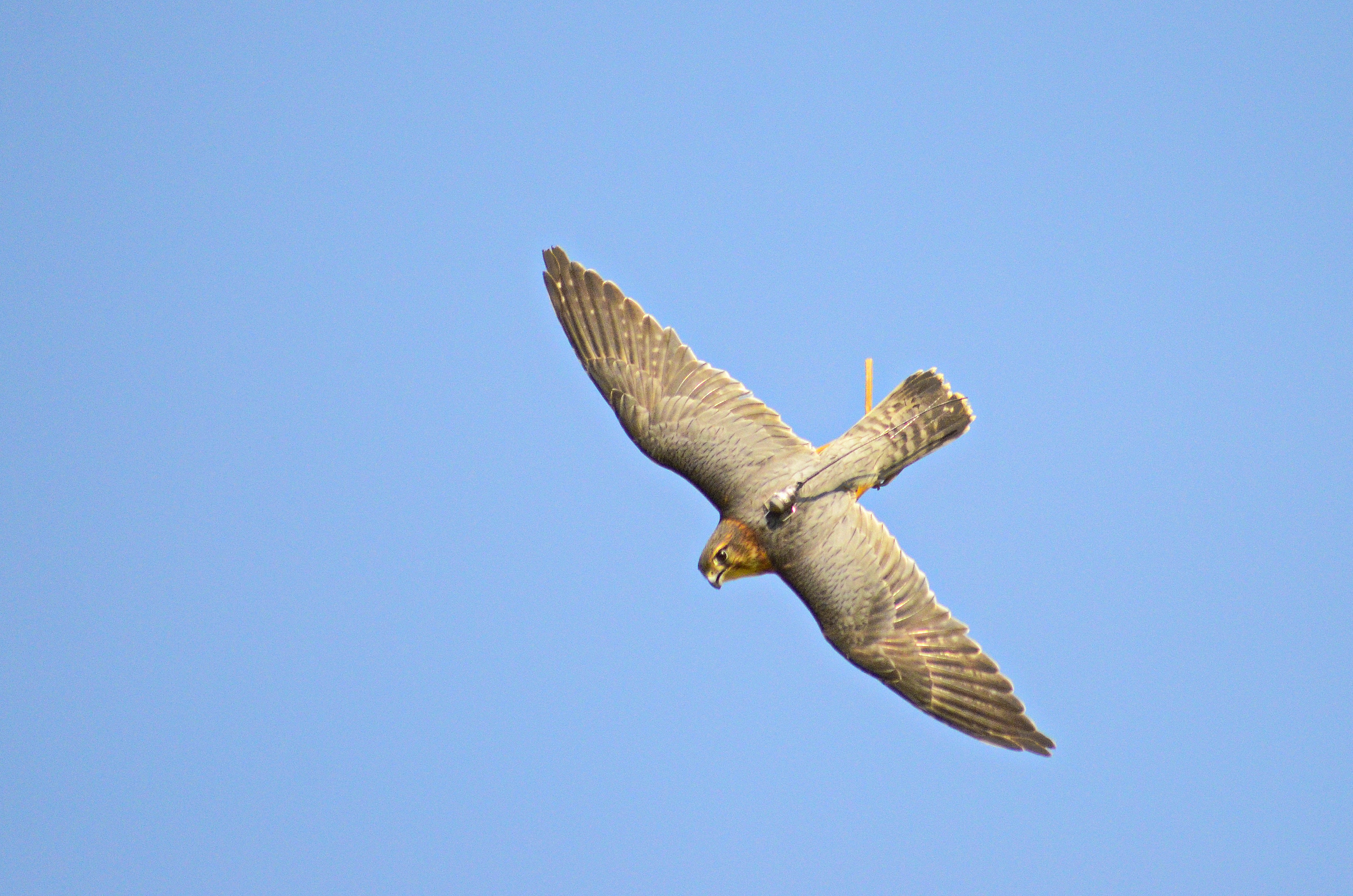
Merlin Falcon
Freya
Freya is our female Merlin Falcon. Hatched in 2023, she is one of the newest members of our family. In the wild, she would be fast enough to catch dragon flies, and this makes her amazing to watch in displays flying to a lure.
Click below to Sponsor "Freya"
MERLIN FALCON FACTS
Falco Columbariaus
TERRITORY/LOCATION
Merlin's are found throughout the Northern Hemisphere. In North America they are found from eastern Canada and Alaska, south throughout Mexico. Merlin's spend the winter in the southern United States, Mexico, Central America, northern South America, and the Caribbean Islands.
HABITAT
Merlin's inhabit fairly open country, such as willow or birch scrub, shrubland, but also taiga forest, parks, grassland such as steppe and prairies, or moorland, parks, and cemeteries. During migration Merlin's stop in grasslands, open forests, and coastal areas.
CONSERVATION STATUS
Least Concern
DIET
They are swift fliers and skilled hunters who specialize in preying on small birds in the size range of sparrows to qual. Common prey include Horned Lark, House Sparrow, Bohemian Waxwing, Dickcissel, Least Sandpiper, Dunlin, and other shorebirds dragonflies, bats caught at cave openings, nestling birds, and small mammals.
SIZE/WEIGHT
Size/Weight 24–33 cm long with a 50–73 cm wingspan.
Compared with most other small falcons, it is more robust and heavily built.
Males average at about 165-230g.
NESTING
Merlin's are increasingly breeding in towns and cities, where they often take over crow nests in conifers planted in residential areas, schoolyards, Breeding occurs typically in May/June. Laying 3-6 eggs. Sometimes first-year merlin's (especially males) will serve as a "nest helper" for an adult pair
LIFE EXPECTANCY
7-8 years average age in the wild
11 years oldest recorded in the wild
15 years oldest recorded in captivity
SCIENTIFIC
CLASSIFICATION
KINGDOM
Animalia
PHYLUM
Chordata
CLASS
Aves
ORDER
Falconiformes
FAMILY
Falconidae
GENUS
Falco
SPECIES
F. columbarius
